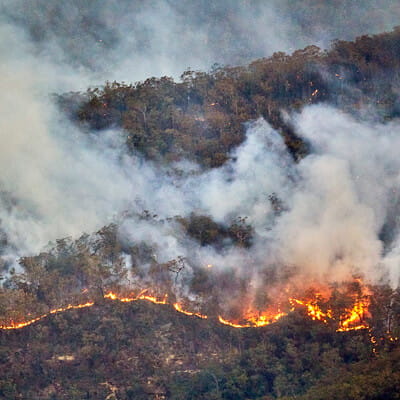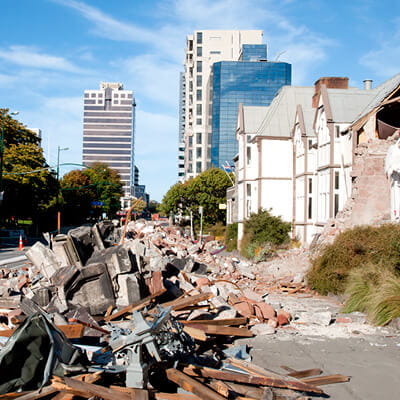How global events can affect reinsurance
- Reinsurance – insurance for insurance companies – is a global matter
- By taking a global approach, reinsurers can be more resilient to major events
- A combination of historical data, current events and plotting potential risks is needed to fully understand potential liability
Reinsurance – insurance for insurance companies – is a global and important business, which supports insurance companies in managing their risks.
Just as the cost of insurance is impacted by many factors, including claims history and the exposures you have, so too is reinsurance.
Events occurring globally, such as catastrophic weather events, can significantly impact the reinsurance market both as a whole and at a local level, as Senior Underwriting Manager for Global Reinsurance Underwriting Operations, Sigi Dobry, explains.
“Reinsurers generally operate globally. A reinsurer could, for example, have a massive loss in Europe. That reinsurer may then need to charge more to other regions across the globe. They have a single pot of capital and if it gets affected by a loss overseas, it can impact insurance business in Australia, as reinsurers need to protect their capital.”

Understanding what could possibly go wrong, and modelling different scenarios, is important for reinsurance. From using historical data to plot the likelihood of events occurring to being mindful of new risks that could emerge, it’s essential that reinsurance companies have a broad view and understanding of what could occur in the future.
“Risk assessment is important in all insurance and reinsurance companies, and in a heavily regulated market like reinsurance, the Australian Prudential Regulation Authority (APRA) is continually monitoring and evaluating how we assess those risks,” says Dobry.
“The world seems to be changing faster today than it seemingly did in the past, which makes it more challenging. Actuaries spend a great deal of time looking at historical data, assessing these potential risks, and quantifying not only the risk, but how much it could potentially cost and consequently how much we need to charge for it.”
Dobry highlights the current cyber challenge as a prime example of an ever-evolving risk, and points to the explosion of asbestos claims that resulted from what we previously believed to be a safe product as an example of unforeseen risks.
Global influences on reinsurance pricing
A number of factors influence reinsurance pricing; including risk adjustments, product changes and treaty exclusions.
Additionally, actual exposure growth, local and global claims activity, global reinsurance cycles, and global reinsurer capacity and appetite, also play a part – as do current events.
“The global events of today impact pricing greatly,” says Dobry.
“For example, let’s say that getting a new roof for your house in Queensland is quoted at $10,000 today. After a catastrophic weather event, there may not be enough building material to repair all the damaged roofs, and local companies probably won’t have enough manpower to complete all the required jobs immediately. This means that material and builders might need to be brought in from elsewhere at an increased cost. After all this, the cost of a new roof in this area will likely have significantly increased from the $10,000 it would’ve cost before the weather event.
While we’re all aware of the supply chain delays and material shortages that are being experienced globally – Dobry highlights the inflationary financial environment as another challenge for insurance and reinsurance companies.
“Inflation has a big impact on pricing, and the rate of inflation can vary between services. For example, the inflation rate for a particular service or product could be higher or lower than the national rate, for instance, the rate for building materials. This could mean that expected claims costs could also be higher or lower than the national inflation rate, depending on the ‘service’ they relate to.”
The impact of global catastrophic events on reinsurance
Major global catastrophic events have a significant impact on the insurance market as a whole – and while reinsurance isn’t only limited to covering catastrophic events, it is a major component of reinsurance cover.

For example, the Canterbury Earthquakes (or Christchurch Earthquakes as they are commonly referred to) of 2011 saw an insured loss of more than NZ$31 billion1. The 2019/20 bushfires in Australia had an insured loss of approximately AU$2.3 billion2 and losses from the New South Wales and Queensland floods of 2022 stand at AU$6.07 billion as at September 20233.
The knock-on effect of catastrophic events and subsequent claims on the reinsurance market can also be significant. Back in 1992, Hurricane Andrew resulted in the second largest insured loss from a US hurricane ever experienced. The impact of this was significant – it caused many companies to go into insolvency.4
“As a consequence, the following year there wasn’t enough reinsurance capacity to place all reinsurance covers fully,” says Dobry.
“Insurance companies had to retain some of the exposure they would normally reinsure, and as a result, we saw the first real ‘hard market’, meaning there was a rise in premiums across the board and restrictions on some coverage terms.”
Of course, reinsurance isn’t just for catastrophic events – it’s used widely by insurance companies for many risks, and helps insurers transfer risk from policyholders and diversify those risks, too.
This global approach to risk management and pricing enables the reinsurance market to smooth out those heavy loss events, and underpins the ability of insurance companies to offer policies and deliver on claims.
Find out more
To learn more from QBE experts like Sigi, visit our website for more professional development opportunities for brokers and partners.
Visit our QBE Re website for more information or to discuss your reinsurance needs.
1 Insurance Council of New Zealand – icnz.org.nz/industry/canterbury-earthquakes
2 Insurance Council of Australia, Historical Catastrophe Data – April 2023
3 Insurance Council of Australia, Historical Catastrophe Data – September 2023
4 Insurance Information Institute – iii.org/article/hurricane-andrew-fact-sheet



